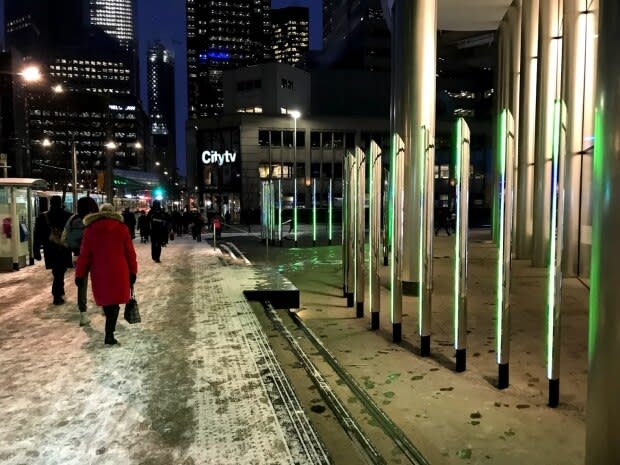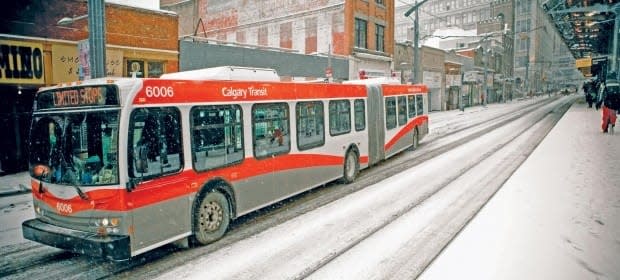If we want to increase transit use in Calgary, better is more important than cheaper

Should transit be free? It's a question some cities and urbanists are asking.
The "free transit" movement is based on the premise that free transit would entice significantly more drivers to use transit, thereby taking cars off the road and reducing GHG emissions, which would help fight climate change.
Would this work in Calgary? A couple of sources with links to Calgary Transit, who wish to remain nameless, estimate free fares for all would probably only increase Calgary Transit ridership by six to 10 per cent.
In fact, if the goal is increased transit use, most say better service, not cheaper service is the way to do it.
"Our customer research indicates that customers would prefer things like higher frequency on routes, better connections, more convenience and an enhanced customer experience above lower fares," said Stephen Tauro, the communications and information lead at Calgary Transit, in an email,
A leader in affordable transit
For some users of the service, Calgary Transit is almost free now.
Low income Calgarians can apply for a monthly pass that, depending on your income, can be as low as $5.30 per month, and low income seniors can get an annual pass for just $25 or $2.08 per month. All Calgary post-secondary students get a $151 per semester (four months) UPass that is included in their tuition fees which works out to about $1.25 per day, if students use the pass on weekends as well.
Given Calgary has had low income fares and a free downtown LRT zone for decades, our city could be considered a leader in providing affordable transit.
But let's concentrate on full-fare transit users. At $6.80 for a round trip or $106 per month, how much of a barrier is the cost of transit? Many drivers pay three times this amount just to park downtown.
Creatures of comfort and convenience
We all know transit is significantly cheaper than driving, but most of us still drive. Why? Because most of us have a car (or two) in the garage that will get us where we want to go much quicker and more comfortably than transit.

Calgary Transit's biggest problems are that it simply isn't as convenient and comfortable as driving — especially in Calgary's six months of winter.
In those months, Calgary's sidewalks can be treacherous and bus stops often have huge banks of snow to climb over to get onto the bus. Then there is the safety issue — many Calgarians simply don't feel safe using the LRT, particularly at night.
In addition, Calgary's transit is very downtown oriented, which means if you want to get to work, school, or an event or meeting that is not downtown, you often have to make one or more transfers. This results in trips significantly longer than driving.

Survey says…
Calgary Transit has extensive city-wide and customer service research to help them create the best transit system it can with the revenues it has.
When Calgarians were asked "What should Calgary Transit do to increase the likelihood of you becoming a regular user?"
34 per cent said nothing.
16 per cent said extended routes.
12 per cent said more frequent service.
11 per cent said reduced fare.
When it came to safety, only 56 per cent of Calgary Transit users feel safe riding transit after dark and only 48 per cent feel safe waiting for transit after dark.
"The majority of transit users, regardless of age, gender and quadrant, reported being negatively impacted by disturbances and disorders," reads Calgary Transit's 2018 Usage and Attitudes Report.
"These behaviours may result in transit users discontinuing their usage if the user perceives them as regularly occurring and/or having a significant impact on their travel and personal safety."
Based on this research, Calgary Transit has found the biggest barriers to getting more people to use the system are:
Calgary's high car ownership, as transit requires more planning than driving and driving is more flexible, convenient and comfortable.
Bus routes designed to feed CTrains creates the perception transit is inconvenient if you don't live near a station or your destination isn't near a station.
Too many connections, transfers and stops make transit inconvenient for longer journeys.
Frequency of service outside of rush hour.
Disturbance and disorderly conduct of some users.
Calgary Transit has an overall customer satisfaction of 75 per cent, but that number drops to 67 per cent and 65 per cent in the northeast and southeast respectively, which relates to the fact that those riders also have the longest commute times. Southwest users are the most satisfied at 84 per cent.
Better transit is more important than free transit
"There is a sizeable body of research that suggests, if your goal is to increase ridership, the most effective tool is to increase the level of service rather than lowering the fare," said Neil McKendrick, a former City of Calgary transit planner.
"People are more likely to pay for something they value. It is well known that the lower the quality of service (less frequent or less available) the lower the interest in using it, other than by those who have no other means of travel,"
But wouldn't better transit be more expensive? Indeed it would, and it would take decades to create a transit service that could even come close to competing with the convenience and comfort of driving.
Currently, Calgary Transit is focused on servicing the downtown, but 75 per cent of Calgarians don't work downtown. The city is becoming more decentralized, with the majority of new jobs and new housing in the northeast and southeast quadrants. Better transit service for Calgarians would require a huge investment in new LRT, BRT and buses over what is currently planned.

And, if Calgary Transit was free, it would have to be funded entirely by municipal taxes.
John Hubbell, Calgary's former general manager of transportation, thinks that could be a problem.
"What is lost in the free transit discussion is the strategic issue of who pays and how stable is that revenue source. With free transit 100 per cent of the operating revenue is at the discretion of council, which in my experience cannot be relied on over time," he said.
"This is a strategic operating risk. With a system that recovers 55 per cent of operating costs from passenger revenues, this risk is cut in half. Transit systems are long term operating entities that need stable funding."
Hubbell is absolutely correct, as the city recently cut $9.3 million from the 2019/2020 transit budget, which resulted in a cut of 80,000 service hours by reducing the frequency of evening and weekend service — exactly what we didn't need.
Some would argue that we could transfer some of the city's budget dollars from roads to transit to make free transit tax neutral?
In theory, if more people take transit, that would mean fewer people using the roads to drive, thereby eliminating the need for the expensive expansion of roads like the $90 million Phase 1 Crowchild Trail project. Or more new interchanges at $100 million a pop.
But we can only do that after we have a city-wide transit system that works for everyone, day and night, seven days a week, so they don't need to drive.
Creating a transit system that meets the everyday needs of Calgarians isn't going to happen overnight. So it is doubtful that free fares are going to attract a significant number of Calgarians to leave the car in the garage and take transit.


